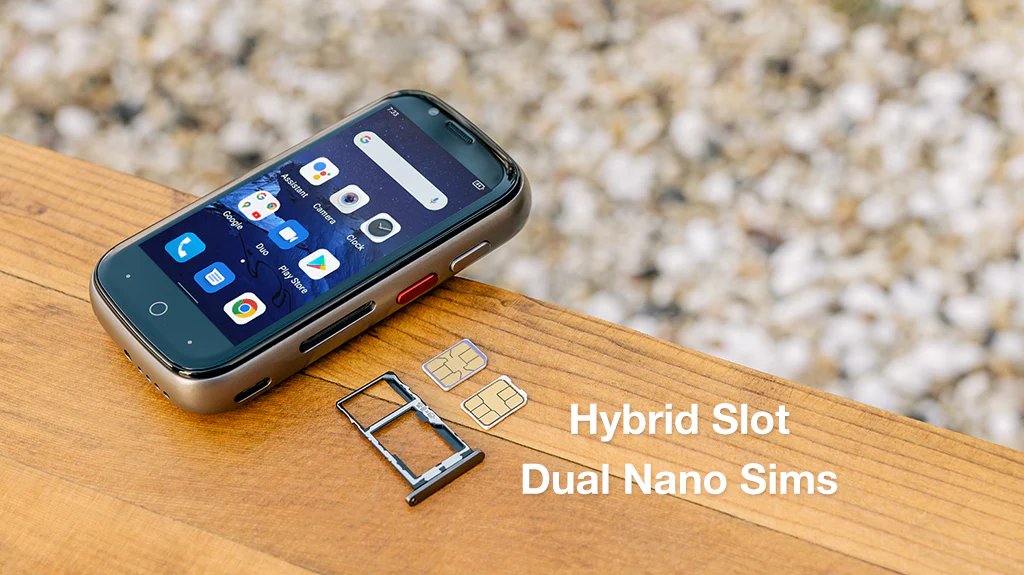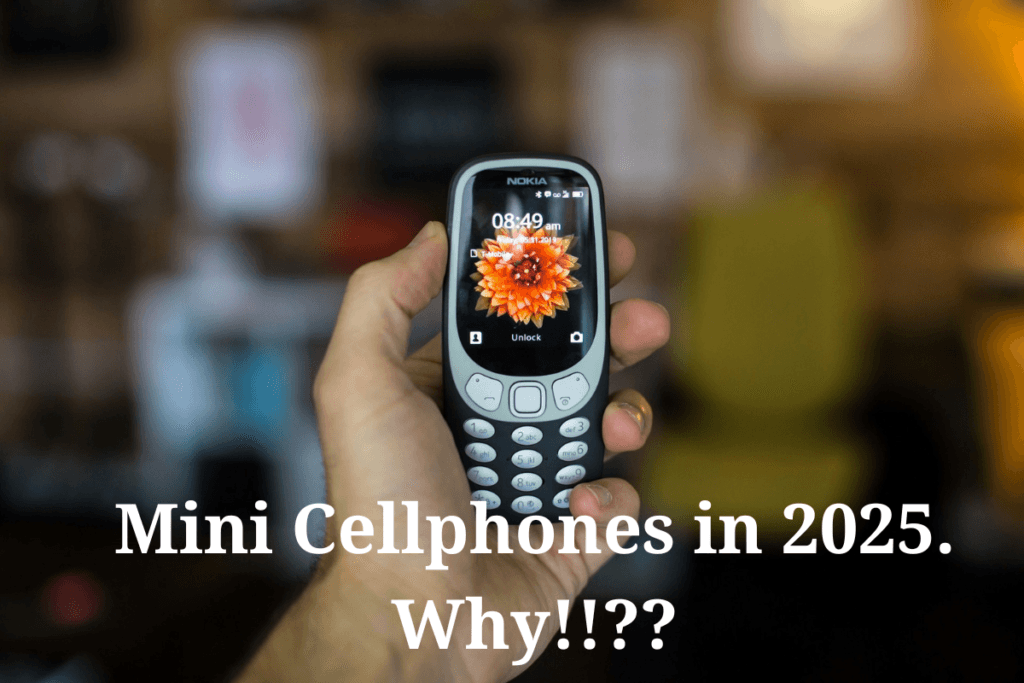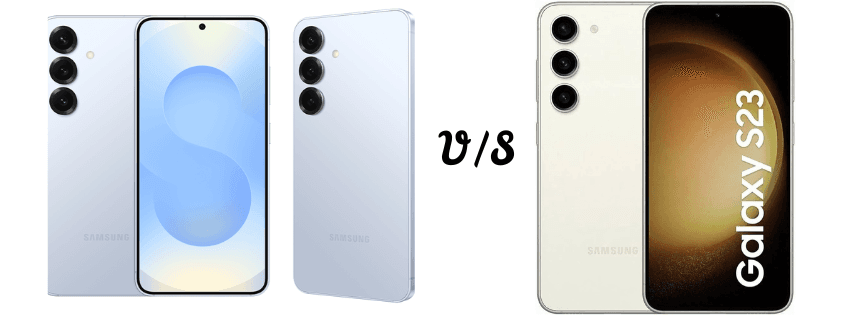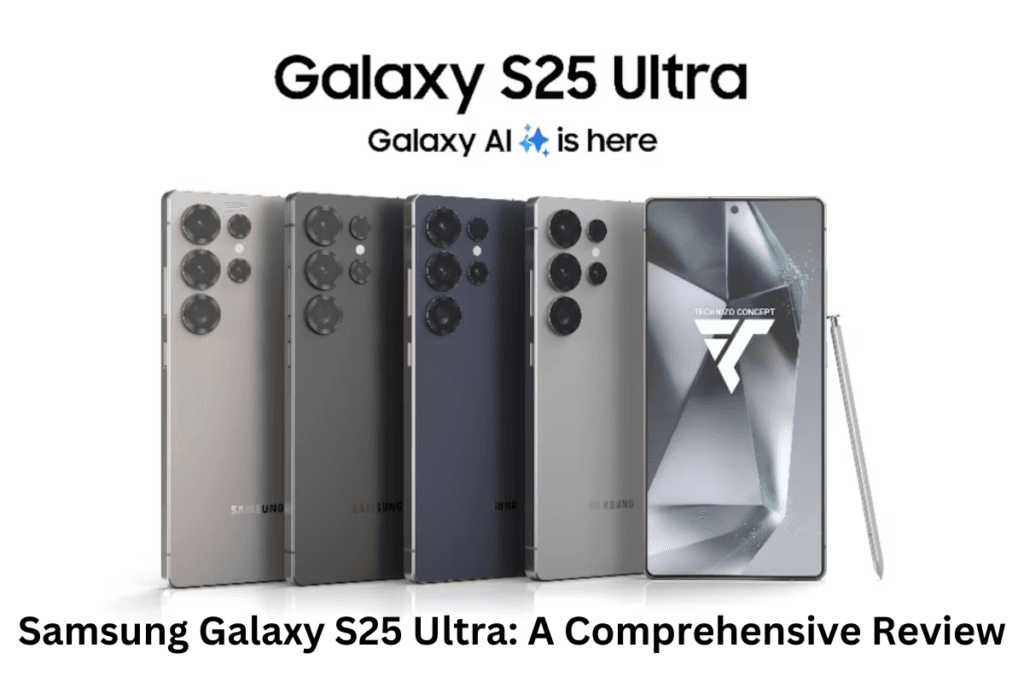Why Mini Cellphones Are Making a Comeback in 2025 + Best Models to Buy
Introduction
Smartphones keep getting bigger every year, but lately, smaller devices are quietly making a comeback. In 2025, many consumers are embracing mini cellphones again – from compact smartphones to simple flip phones – driven by nostalgia, convenience, and a desire for less tech overwhelm. This post explores why mini cellphones are trending, which models are leading the charge, and how they stack up against standard large-screen smartphones.
The Comeback of Mini Cellphones: What’s Driving It?
Consumer Trends Behind the Small Phone Resurgence
- Digital Detox & Nostalgia: A growing number of users (especially Gen Z) are ditching feature-packed smartphones for “dumbphones” or flip phones to reduce screen time and recapture a 90s/2000s retro vibe. This nostalgia-fueled trend is a fun way to escape constant notifications and social media addiction.
- Desire for Simplicity: Many people crave simpler devices focused on essential communication. Mini phones strip away distractions – fewer apps, smaller screens – helping users stay present and mindful.
- Secondary Phone Lifestyle: Some consumers adopt mini cellphones as a secondary device – for travel, nights out, or as a “weekend phone” – to stay reachable without the heft and distraction of a primary smartphone.
Market Demand and Industry Response
- Niche Market Growth: While big-screen phones still dominate, a vocal minority of consumers actively seeks smaller devices. The enduring demand has led brands to reconsider compact designs.
- Manufacturers React: Sensing this demand, phone makers are reintroducing compact designs. Brands like Google, Samsung, and Motorola are expected to offer smaller flagship models in 2025.
- Broad Appeal: The resurgence spans both advanced smartphones and basic flip phones. Even tech reviewers note that today’s top small phones range from modern flagships to minimalist handsets.
Key Features Fueling Mini Phone Popularity
- Pocket-Friendly Portability: The biggest draw of mini cellphones is their size. Compact phones are easy to carry and use one-handed.
- Lightweight Design: Less weight means less strain during long calls or extended use, which many users appreciate.
- Extended Battery Life: Many small phones boast longer battery life since their petite screens and simpler hardware consume less power.
- Affordability: Compact devices often come with a fraction of the cost of flagship phones.
- Privacy & Focus: Mini cellphones offer privacy benefits with fewer apps and sensors, reducing tracking and data collection.
- Durability: Many mini cellphones, especially flip phones, are quite durable, making them ideal for rough use.
Mini vs. Standard Smartphones: Key Advantages
Mini cellphones aren’t just cute or nostalgic – they offer tangible advantages over today’s standard oversized smartphones:
- True Portability: The most obvious benefit is how effortless it is to carry a mini phone. No more bulging pockets or fumbling with two hands. A small phone can go anywhere – slipped into tight jeans or a small purse – where a 6.7″ slab just wouldn’t fit. This freedom from bulk is a game-changer for people who are always out and about.
- Comfort & One-Hand Use: With a compact device, you can comfortably text or scroll with one hand, and hold the phone for long calls without fatigue. Standard big smartphones often cause hand strain or require finger gymnastics to reach the top of the screen. Mini phones bring back the ease of use we had in the early smartphone days, which many find simply more comfortable day-to-day.
- Less Distraction, More Intentional Use: Smaller screen, fewer apps – by design, mini cellphones encourage you to use your phone for what you need, then put it away. It’s harder to get lost in endless feeds or video binges on a 3-5″ display. In this sense, mini phones can foster a healthier relationship with technology, helping curb mindless screen time. They keep you connected without sucking you into the digital vortex (a deliberate appeal of devices like the Light Phone). As noted, this focus on essential communication is a refreshing change in our notification-flooded lives.
- Affordability & Value: Many mini phones cost much less than flagship smartphones. You’re not paying for a giant OLED screen or multiple specialized cameras, which drives down price. For under $500 – even under $100 in the case of feature phones – you can get a reliable device that covers the basics. For example, the $80 TCL Flip 2 delivers clear calls, texts, and even email access, which is tremendous value. If your priority is communication and not running the latest 3D games, a cheaper small phone can save you hundreds of dollars while doing the job just fine.
- Extended Battery & Standby: Smaller phones (especially less “smart” ones) often have excellent battery longevity. Without massive screens and power-hungry processors, they sip power slowly. Many basic flip phones easily last 2-3 days on a charge with moderate use, whereas big smartphones often struggle to last a full day. Even compact smartphones tend to get more screen-on time per mAh than their jumbo counterparts. This reliability is a major plus if you’re frequently away from outlets or just tired of charging every night.
- Durability & Practicality: A mini phone usually means less glass and more compact structure, which can survive drops or tosses better. Plus, some mini devices like flip phones are purpose-built for toughness – with sturdy hinges, plastic shells, and no fragile giant display exposed 24/7. If you work outdoors, travel a lot, or need a phone for a child/elderly parent, a simpler small phone is often a more practical choice (less to break, and cheaper to replace if it does).
- Privacy and Peace of Mind: As mentioned, mini cellphones with basic functions inherently collect and broadcast less of your data. No always-on mic listening for “Hey Google”, no myriad apps tracking location in the background – it can be a relief for the privacy-conscious. Even for average users, there’s peace of mind in knowing your phone is just a phone and not a constant spy/advertising machine. This is an often overlooked but growing reason some are opting for minimalist phones over feature-packed smartphones.
Best Mini Cellphones of 2025
From pint-sized smartphones to modern flips, here are some of the top mini cellphones you can get in 2025. Each offers a unique mix of compact size, capabilities, and appeal to different users.
1. Apple iPhone 16E
A compact and powerful iPhone designed for those who want flagship performance in a smaller, budget-friendly device. The iPhone 16e offers long battery life, enhanced AI-powered features, and seamless integration with the Apple ecosystem.
Note: Apple’s iPhone SE 3rd Gen with a 4,7-inch screen was even smaller, but it’s discontinued now.
- Display: 6.1-inch OLED
- Chipset: A18 Bionic
- Camera: 48MP rear
- Why Buy? The iPhone 16e is ideal for users who want a compact, high-performance iPhone without breaking the bank. It caters to students, professionals, and minimalists who prefer a lightweight device with long battery life and top-tier camera capabilities. Its powerful A18 Bionic chip ensures smooth performance, making it an excellent choice for those who want Apple’s ecosystem in a smaller form factor.
- Price: ~$599
- Unbeatable Reasons Why the Affordable Apple iPhone 16E is a Game-Changer!
- Buy iPhone 16e
2. Google Pixel 8a
A budget-friendly compact Android. Rumored to launch with a 6.1-inch OLED display, it keeps a relatively small footprint thanks to slim bezels. Expected to run on Google’s Tensor G3 chip (like the Pixel 8) with 7 years of software updates promised. This means it’s future-proof for a long time. The Pixel 8a should also carry the Pixel line’s excellent camera processing for sharp photos, all at a lower cost.
- Display: 6.1-inch OLED
- Chipset: Tensor G3
- Why Buy? Compact and budget-friendly with 7 years of software updates.
- Price: ~$499
- Target Audience: Android users seeking a compact phone on a budget – ideal for those who want Google’s clean interface and long support, but in a smaller, cheaper device
- Buy Google Pixel 8a
3. Samsung Galaxy S25
A flagship in a compact form. The Galaxy S25 has a 6.2-inch Dynamic AMOLED screen, making it one of the most compact high-end phones this year. It’s ultra-thin (around 7.2mm) and only 162g light, yet it doesn’t skimp on power – packed with the top-tier Snapdragon 8 Elite processor and a versatile triple-camera setup. You get 5G, IP68 water resistance, and 7 years of updates from Samsung, matching the longevity of much larger phones.
- Display: 6.2-inch Dynamic AMOLED
- Chipset: Snapdragon 8 Elite
- Why Buy? Flagship Android performance in a one-hand-friendly size.
- Price: ~$800(flagship tier)
- Target Audience: Power users who want flagship Android features (performance, cameras, premium build) in a one-hand-friendly size. Also great for anyone upgrading from older small phones – it proves you don’t need a huge device for high-end specs.
- Buy Samsung Galaxy S25
4. Samsung Galaxy Z Flip 5
A foldable flip phone that brings nostalgia and innovation together. The Galaxy Z Flip series features a roughly 6.7-inch inner touchscreen that folds in half – so when closed, it’s a tiny square that slips into any pocket. The latest model (Flip 5, with Flip 6 expected) has a durable hinge and an improved crease, plus a handy cover display for notifications and quick selfies. Specs are flagship-level (Snapdragon 8-series chip, dual cameras, 120Hz display).
The Z Flip also appeals to nostalgia – it’s essentially a 2025 take on the classic flip phone, satisfying both tech geeks and retro lovers. (For a similar vibe with a different flavor, the Motorola Razr+ (2024) offers a competing foldable design, a large outer display, and a clean Android experience at around $999.)
- Display: 6.7-inch Foldable OLED (folds to palm-size)
- Chipset: Snapdragon 8-series
- Why Buy? Trendy users who want a full smartphone that folds to fit any pocket.
- Price: ~$999
- Target Audience: Style-conscious users and multitaskers who love the pocketability of a flip phone but need a full modern smartphone. It’s perfect for those who want to enjoy a big screen only when they need it and carry a sleek compact device the rest of the time
- Buy Samsung Galaxy Z Flip 5
5. TCL Flip 2 (Feature Phone)
A simple mini phone for basic needs. The TCL Flip 2 is a modern 4G flip phone with a tiny 2.8-inch screen and traditional T9 keypad. It excels at calls and texts – delivering clear voice quality and 14 hours of talk time on a charge. It even includes Wi-Fi and email support to cover essentials, though it doesn’t run typical app stores.
The Flip 2 “brings the classic feature phone into the modern age” with just enough connectivity to get by, without the complexity (or distraction) of a smartphone. (Alternatives: Nokia’s 2780 Flip offers similar basics plus the ability to download a few apps, while devices like the Light Phone II provide an even more minimalist, screen-free experience for extreme unplugging.)
- Display: 2.8-inch LCD + Keypad
- Why Buy? Basic phone for calls/text with long battery life and old-school simplicity.
- Price: ~$80 (very affordable)
- Target Audience: Those seeking a no-frills phone – think seniors who want a simple, reliable handset or millennials doing a digital detox. It’s also great as a backup or emergency phone
- Buy TCL Flip 2
6. Unihertz Jelly 2 (Ultra-Mini Smartphone)
(Honorable mention) One of the smallest smartphones in the world, the Jelly 2 packs a 3-inch display and Android OS into a device not much larger than a credit card. Despite its tiny size, it can run popular apps and even has dual SIM slots for travel. Battery life is decent for its size and it includes both front and rear cameras (though basic).
Downsides: a 3-inch screen and modest specs make it less practical as a primary phone, but it’s a nifty gadget to have. (The “NanoPhone” featured on Mashable is a similar mini device sold as a way to “downsize your screen time” literally.
- Display: 3-inch
- Why Buy? One of the smallest smartphones in the world, ideal for a secondary device.
- Price: ~$150–$200
- Target Audience: Tech enthusiasts and minimalists who want an ultra-portable secondary phone or a novelty device. It’s ideal for times you don’t want to carry a bulky phone – like workouts or nights out – or simply to amaze friends with how small a functioning smartphone can be.
- Buy Unihertz Jelly 2

Comparison Table: Top Mini Phones of 2025
| Model | Display & Size | Price (USD) | Best For |
|---|---|---|---|
Apple iPhone 16e | 6.1″ OLED | ~$599 | iOS fans wanting a compact, budget-friendly iPhone |
| Google Pixel 8a | 6.1″ OLED | ~$500 | Budget Android users |
| Samsung Galaxy S25 | 6.2″ AMOLED | ~$800 | Flagship Android experience in a compact size |
| Samsung Galaxy Z Flip 5 | 6.7″ Foldable OLED | ~$999 | Foldable smartphone fans |
| TCL Flip 2 | 2.8″ LCD + Keypad | ~$80 | Basic phone for calls & text |
Mini vs. Standard Smartphones: Key Advantages
- True Portability: No more bulging pockets or two-hand typing struggles.
- Comfort & One-Hand Use: Mini phones bring back the ease of use.
- Less Distraction, More Focus: Encourages intentional phone use.
- Affordability & Value: Smaller phones cost much less than flagship models.
- Extended Battery & Standby: Mini phones typically last longer.
- Durability & Practicality: Compact phones are often more rugged.
- Privacy and Peace of Mind: Less tracking and fewer intrusive apps.
Final Thoughts
Mini cellphones are making a strong comeback in 2025, offering a balance of practicality, affordability, and simplicity. Whether you’re seeking a nostalgic flip phone, a pocket-friendly flagship, or a minimalist device to cut screen time, there’s a mini cellphone for you. If you’re tired of oversized phones, now is the perfect time to downsize!



